How to Roast Asparagus
on Apr 23, 2024, Updated Jan 20, 2025
This post may contain affiliate links. Please read our disclosure policy.
Roasting asparagus is my favorite way to cook asparagus during the cooler months, whether you cook them to al dente or super tender. They get golden, and the high heat brings out the natural sugars in the vegetables.
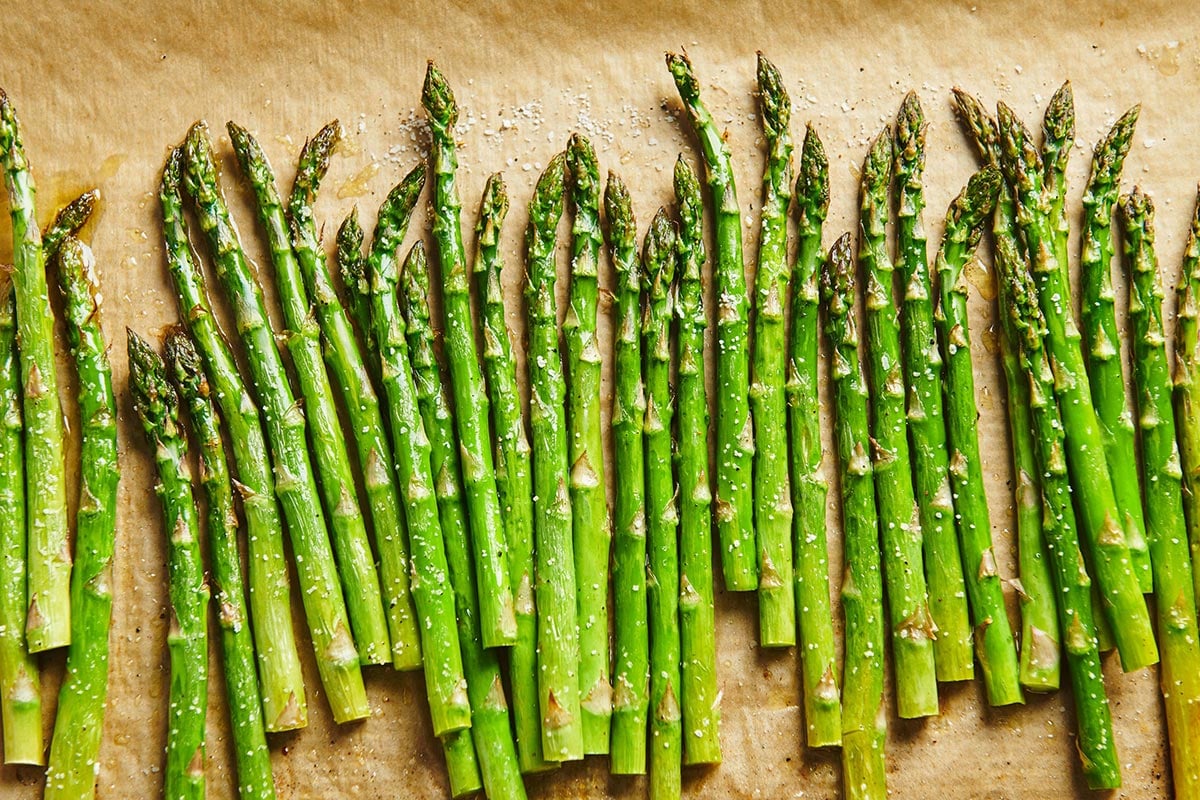
Roasting is probably my favorite way to cook asparagus all year long, especially in the cooler months. The natural sugars in the vegetable are concentrated by the high heat (which is why roasting is one of the greatest cooking methods, period), and the spears turn a nice golden brown in spots.
Come spring, peak asparagus season, some version of roasted asparagus appears on our table a couple of times a week. The high oven heat deepens the flavor of the vegetable, and all those nutrients stay right in the asparagus where they belong. Whether you like them cooked al dente (Italian for “to the tooth,” meaning with a bit of firmness) or to a softer consistency, roasted asparagus takes on a sweetness that is very appealing, especially when salted just right.
By signing up, you agree to our Privacy Policy.
Roasted asparagus is a very versatile side dish, and goes with anything from Chicken Piccata to Baked Salmon with Lemon Butter Sauce to Fall-Apart Roasted Pork Shoulder with Rosemary, Mustard, and Garlic.
What's In This Post?
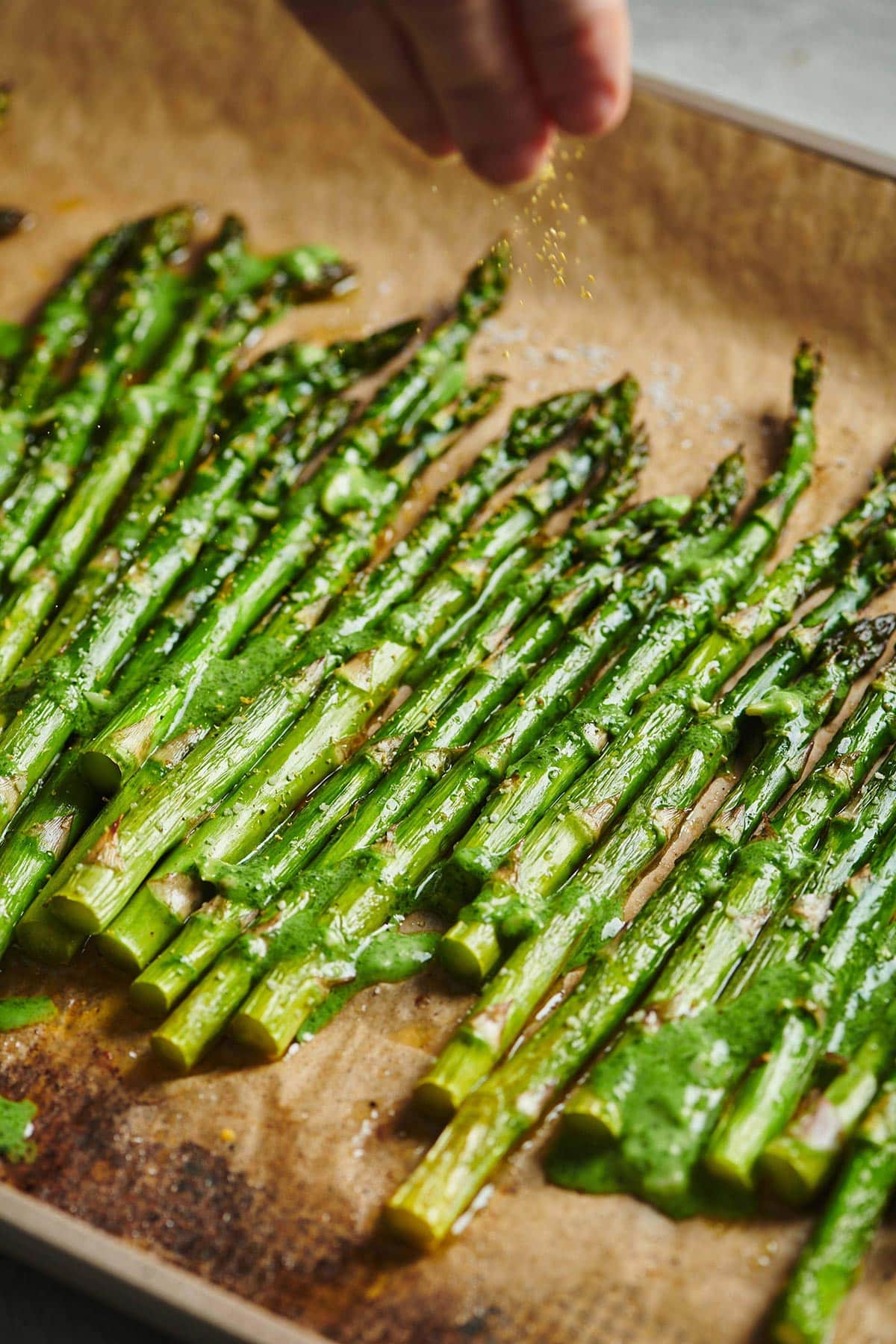
Funnily enough, when my younger son Charlie was little, he didn’t like the tips of the asparagus, so he chomped his way all the way up the stalk and left the perfect little pointed tops for one of us to pick off of his plate. Luckily, his older brother Jack really liked the tips.
Beyond roasting, asparagus takes to all kinds of cooking methods. As the weather warms up, you’ll definitely want to try grilling your asparagus, another favorite cooking method. The main advantage to cooking asparagus in the oven over grilling is that you can’t lose it between the grill grates (yes, I know they make grill pans for this purpose — sometimes I’m just too lazy to find mine).
The thickness of the asparagus is simply a matter of preference. Thin asparagus spears just need the bottom inch or so cut off and will roast in about 7 to 12 minutes. The fatter ones take longer to cook (anywhere from 10 to 16 minutes) but are more substantial to bite into. You might want to peel the thick skin from the bottom of thicker stalks, as well as trim the bottom inch or two. Read on for the best way to prepare asparagus for cooking.
Peeling Asparagus for Roasting
You’ll be rewarded with tender asparagus from stem to stern if you peel off the thick skin towards the bottom of the stalk before roasting the asparagus. After trimming the woody ends from the asparagus, take a vegetable peeler and peel the green outer layer off from the bottom 3-ish inches of the stalk. If you don’t feel like doing this, you can just snap off 3 inches from the bottoms instead of 1, but in the spirit of reducing food waste, I don’t recommend it. Grab that peeler, and check out How to Prepare Asparagus for more details.
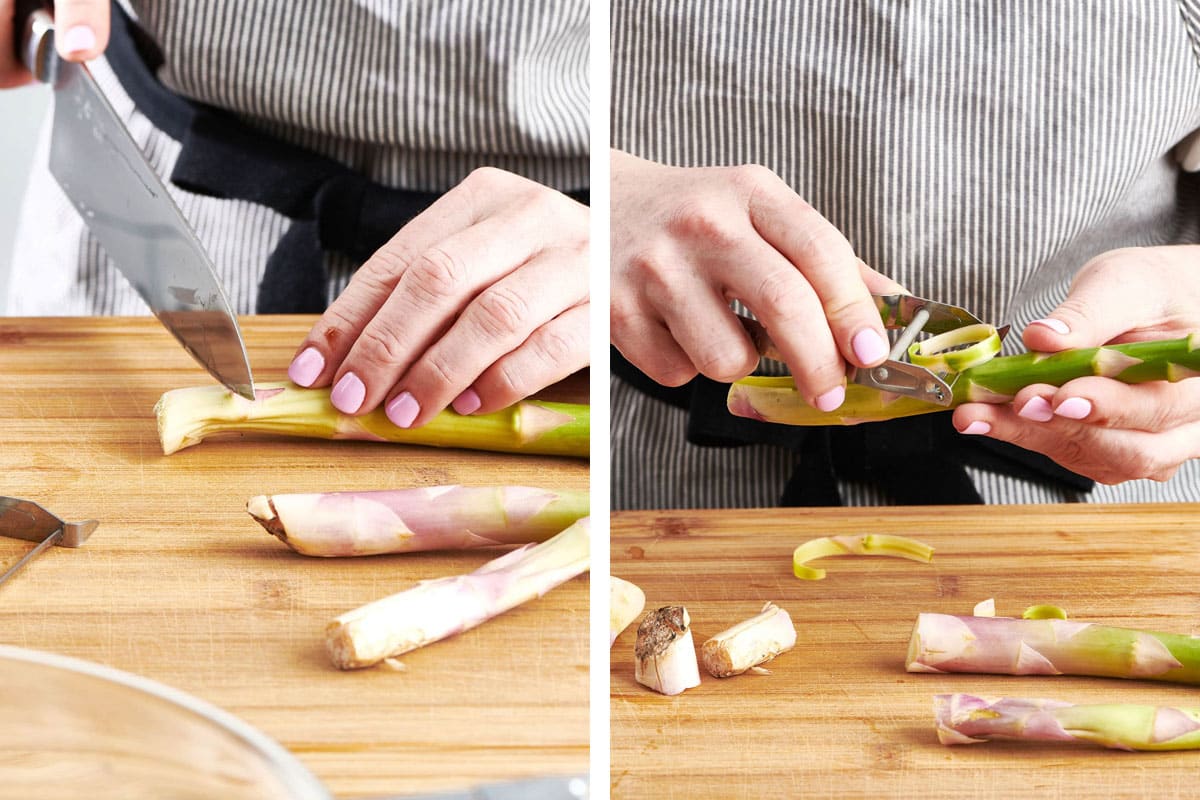
How to Make Roasted Asparagus in the Oven
- Place asparagus on rimmed baking sheet: Try to keep the asparagus in a single layer. Toss the asparagus with the oil, making sure it’s nicely and evenly coated.
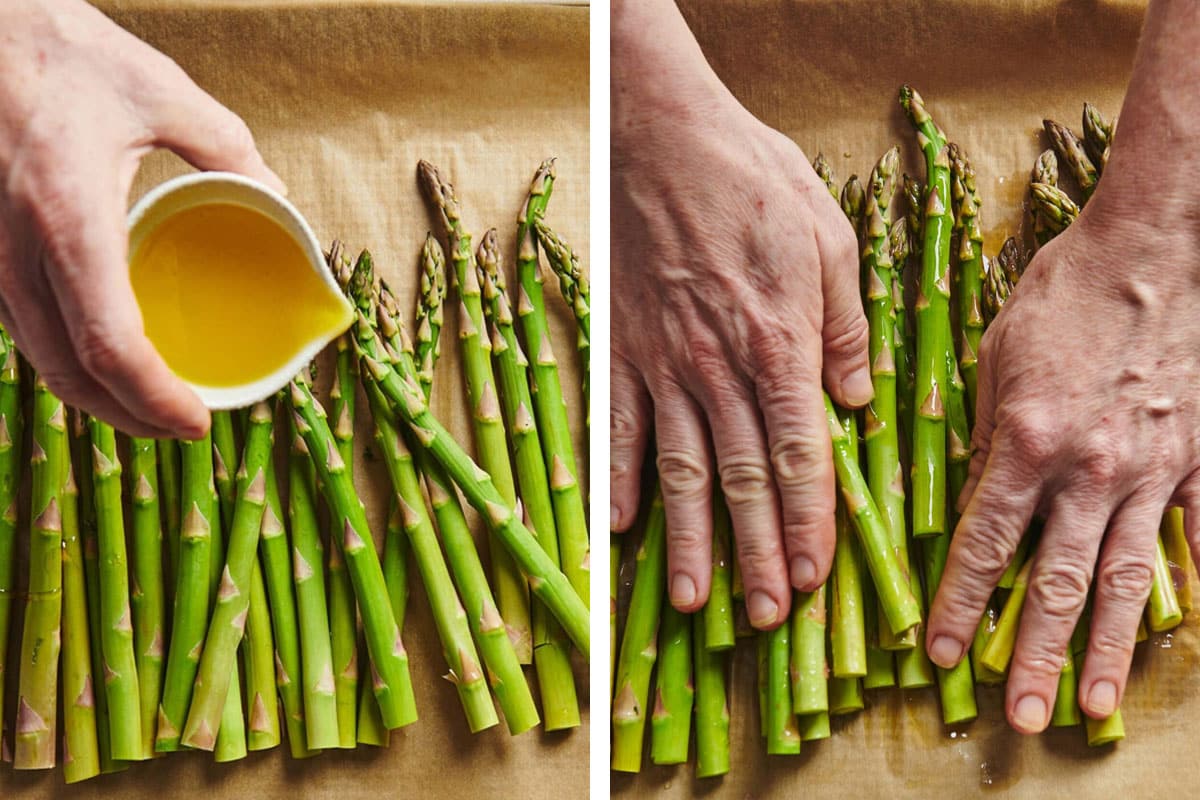
- Season: Sprinkle over some kosher salt and freshly ground black pepper if desired.

- Roast the asparagus: Roast at 425 degrees F. If your oven is set to 400 or 450 degrees, that’s fine. Just adjust the cooking time up or down accordingly by a few minutes.

Tips for Roasting Asparagus
- You can line the pan with parchment paper or foil, which helps make clean-up very easy. I am quite obsessed with my big package of precut baking sheet-sized pieces of parchment paper. I think it’s my favorite shortcut prep tool in the kitchen.
- Try to keep the asparagus in a single layer or just slightly overlapping, so that all of the spears can have air circulating around them and caramelize.
- Remember that the asparagus will continue to soften after they are removed from the oven, so take them out a minute or two before they reach your intended level of doneness.
How Long to Roast Asparagus
The roasting time for thin stalks at 425 degrees is about 8 to 10 minutes for thin stalks and 10 to 14 minutes for thick stalks. The cooking time depends on the thickness of the stalks and how you like your asparagus cooked. Keep in mind that the asparagus will continue to “cook” after they leave the oven, especially if you leave them on the hot tray. Take them out just before they are as cooked as you would ultimately like them to be.
Many people like their asparagus al dente, which basically means crisp-tender. But you should cook your vegetables to taste, to your preferred softness or crispness. And remember, they will continue to soften once you remove them from the oven.
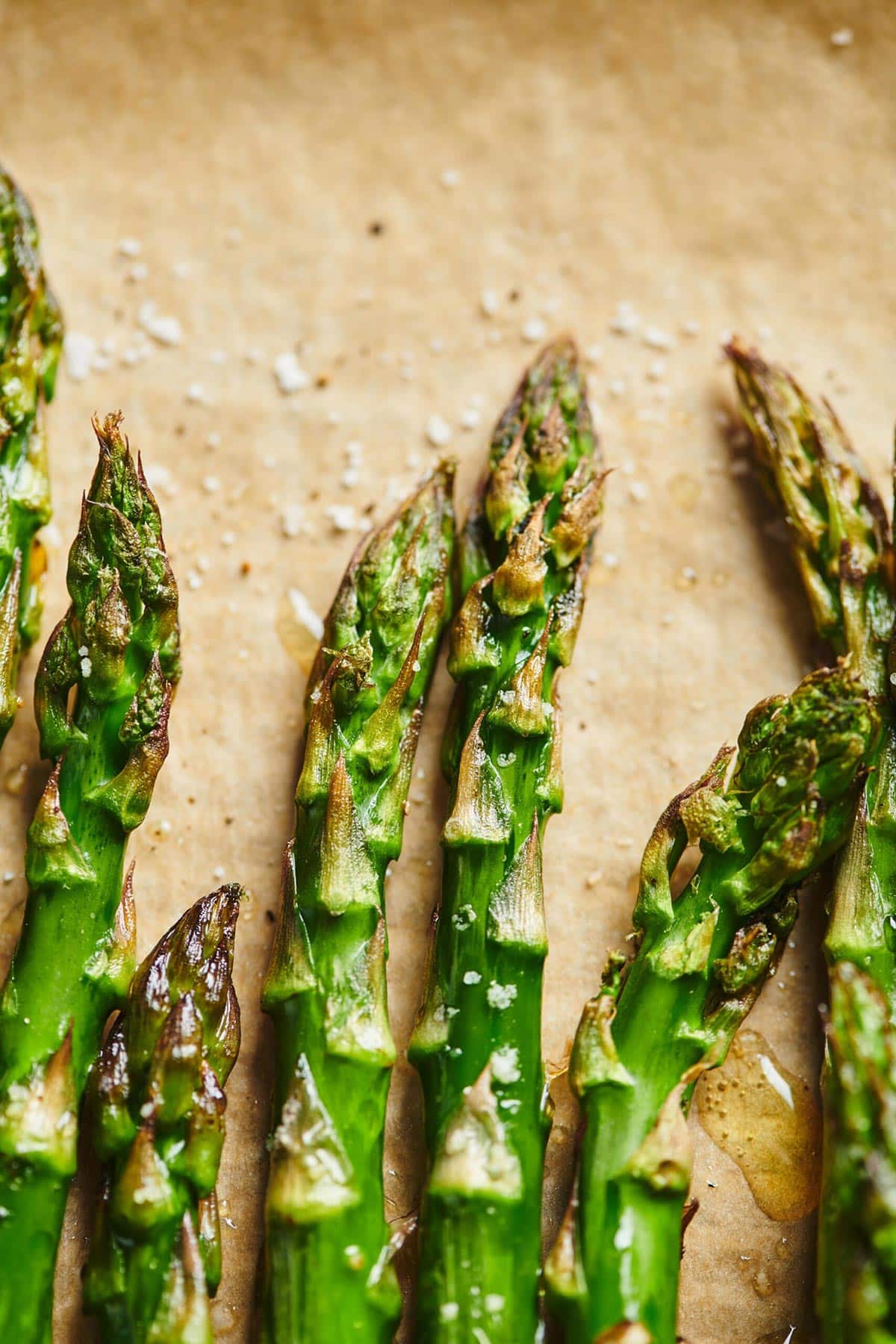
Leftovers and Storage
Leftover roasted asparagus can be stored in a container in the fridge for up to 4 days, if they were quite fresh when you cooked them. You can warm them in a 350-degree oven until warmed through, but they will get softer as they reheat. They can also be reheated in the microwave. But also consider eating them at room temperature or even cold. Leftover roasted asparagus is also great sliced and added to soups and salads.
What to Serve With Roasted Asparagus
You can serve them very plain, and they will be delicious. Or, squeeze fresh lemon juice over all or some of the asparagus and sprinkle on the capers. Another thing to do to make them special is to drizzle them with a sauce. Try one of these sauces, served either at room temperature or warm: Sesame Drizzle, Spicy Drizzle, Chimichurri Sauce, Sriracha Sauce, or Simplest Fresh Herb Sauce. Or try this variation pictured below: Garlicky Roasted Asparagus with Parmesan.
Also, a plate of room-temperature asparagus tossed with a bit of homemade vinaigrette dressing recipe is a pretty elegant spring side.
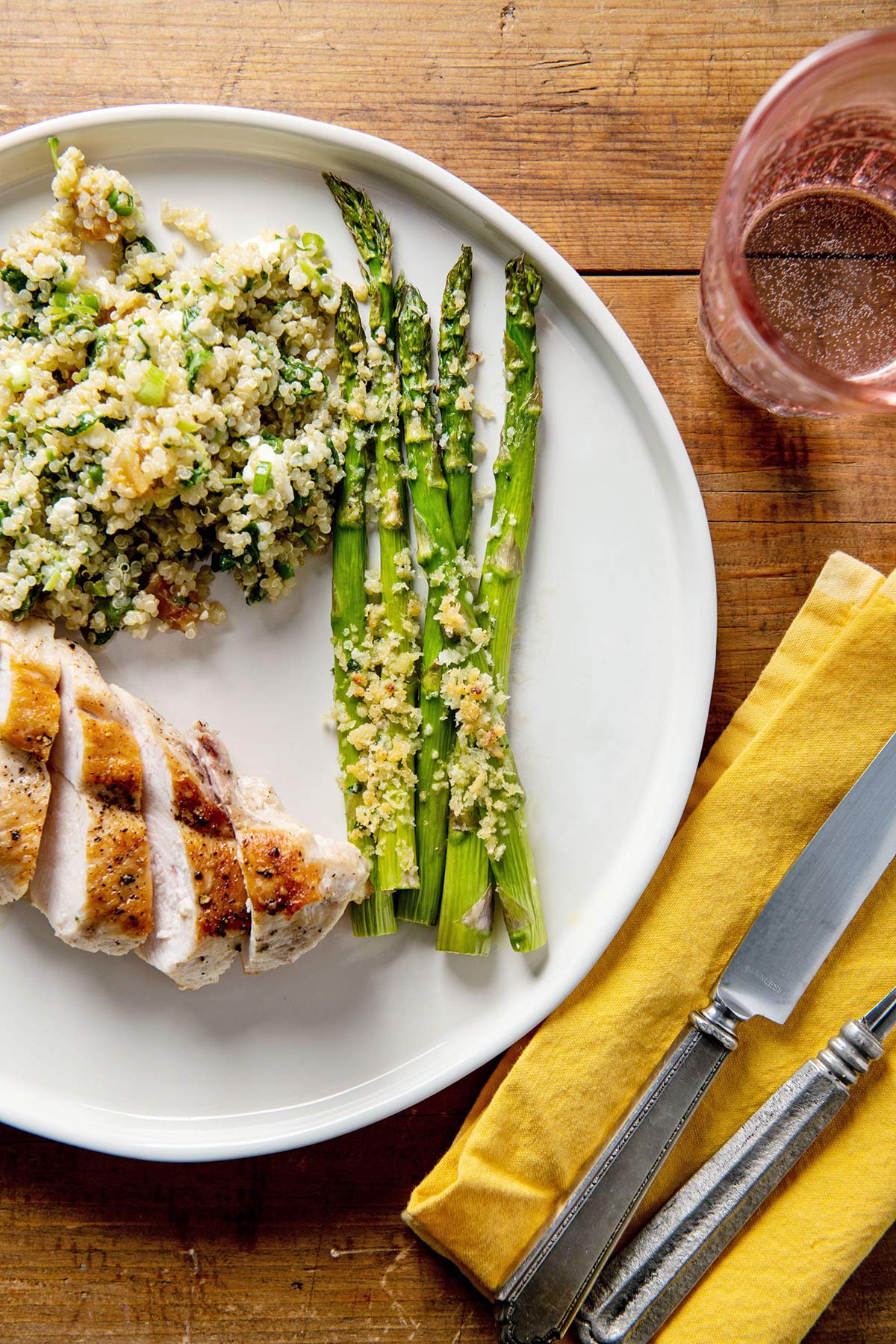
More Roasted Asparagus Recipes
- Simple Roasted Asparagus with Shallots and Parmesan Cheese
- Roasted Asparagus with Creamy Lemon Dressing
- Garlicky Roasted Asparagus with Parmesan
Pin this now to find it later
Pin It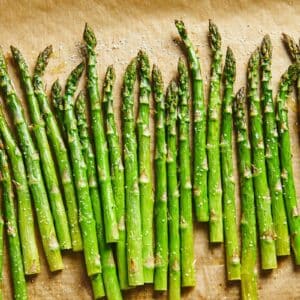
Oven-Roasted Asparagus
Ingredients
Instructions
- Preheat the oven to 425 F.
- Place the asparagus in a baking pan or rimmed baking sheet. Don’t worry about finding a pan large enough to hold the asparagus in one layer — the stalks can overlap a bit. Drizzle the olive oil over them and toss gently to coat the asparagus evenly. Sprinkle on the salt, and toss again.
- Roast the asparagus for 8 to 10 minutes for thin stalks and 10 to 14 for thick ones. If they overlap, just give them a little shuffle with a spatula halfway through the cooking time so they all have a chance to brown a bit. Remember that they will continue to cook a bit after you remove them from the oven, so take them out while they’re still a little firmer than you would like.
Notes
- You can line the pan with parchment paper or foil, which helps make clean-up very easy. I am quite obsessed with my big package of precut baking sheet-sized pieces of parchment paper. I think it’s my favorite shortcut prep tool in the kitchen.
- Remember that the asparagus will continue to soften after they are removed from the oven, so take them out a minute or two before they reach your intended level of doneness.
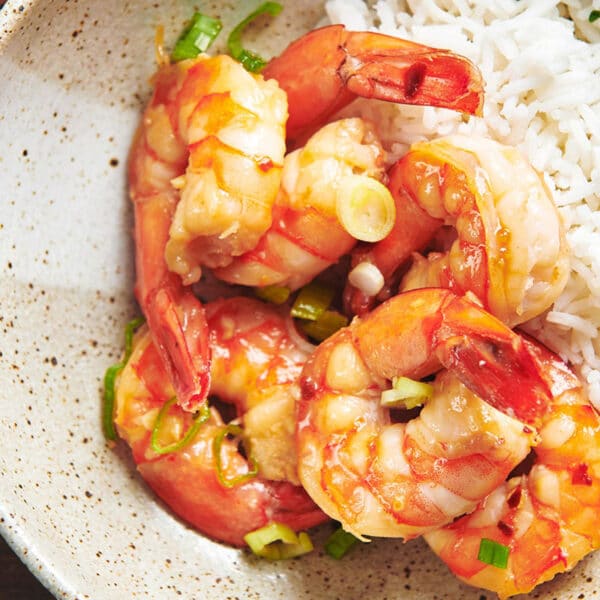
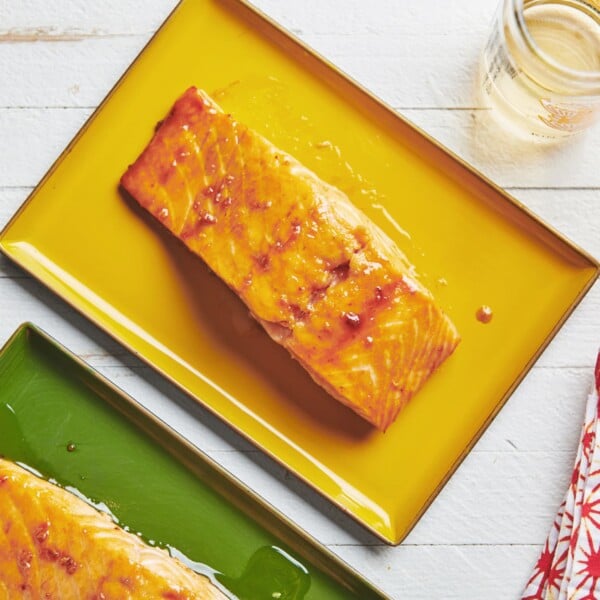
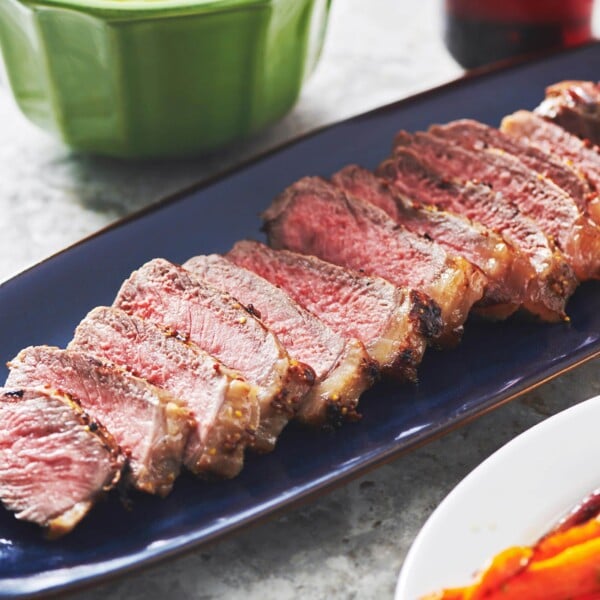
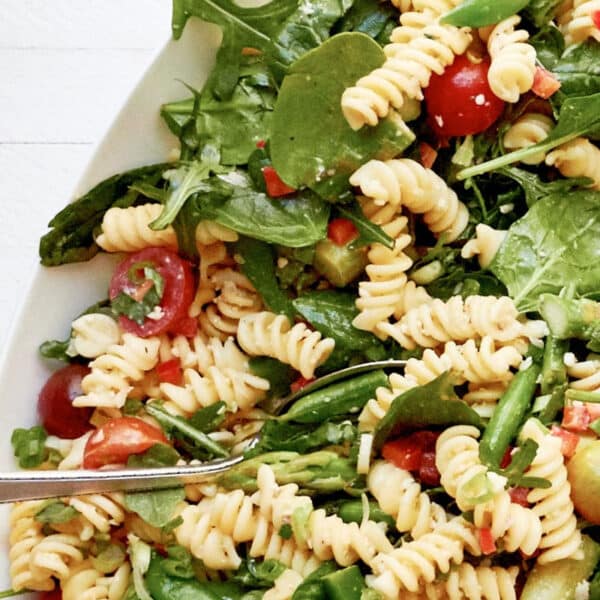
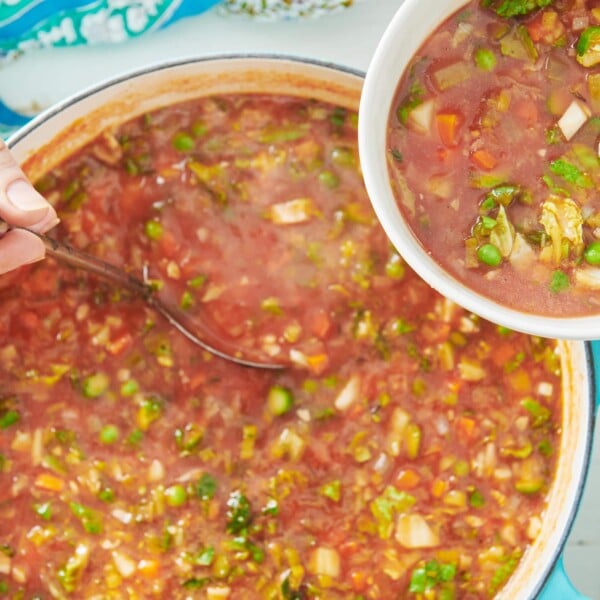
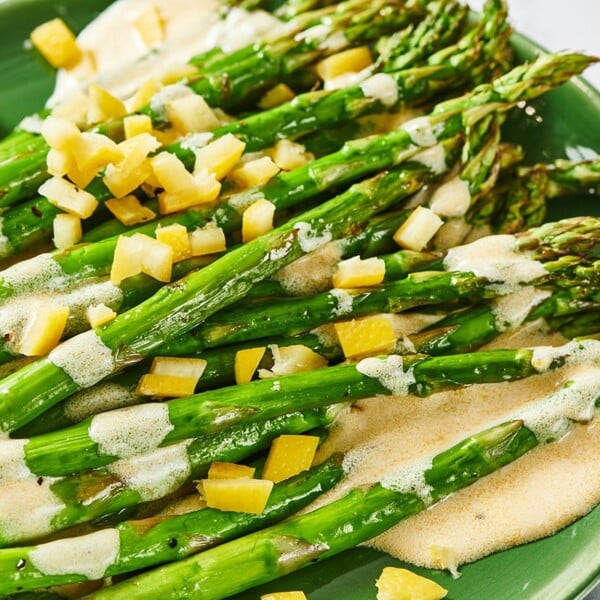
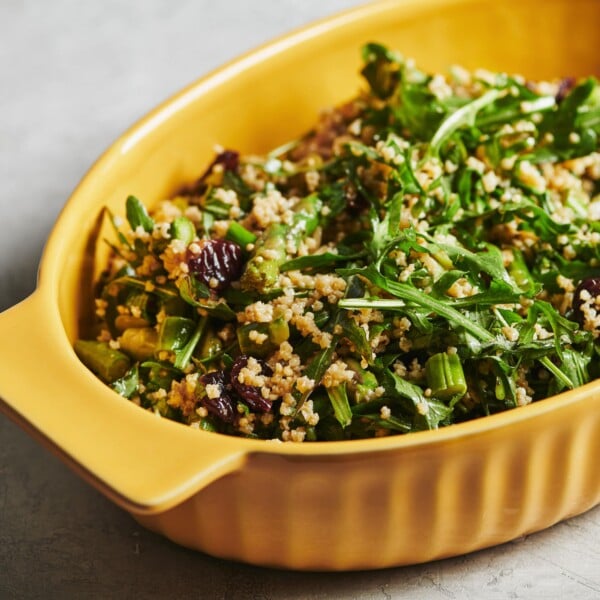









My family loves asparagus because of this recipe. My MIL asks me to make it when we cook together, perfect gateway recipe.